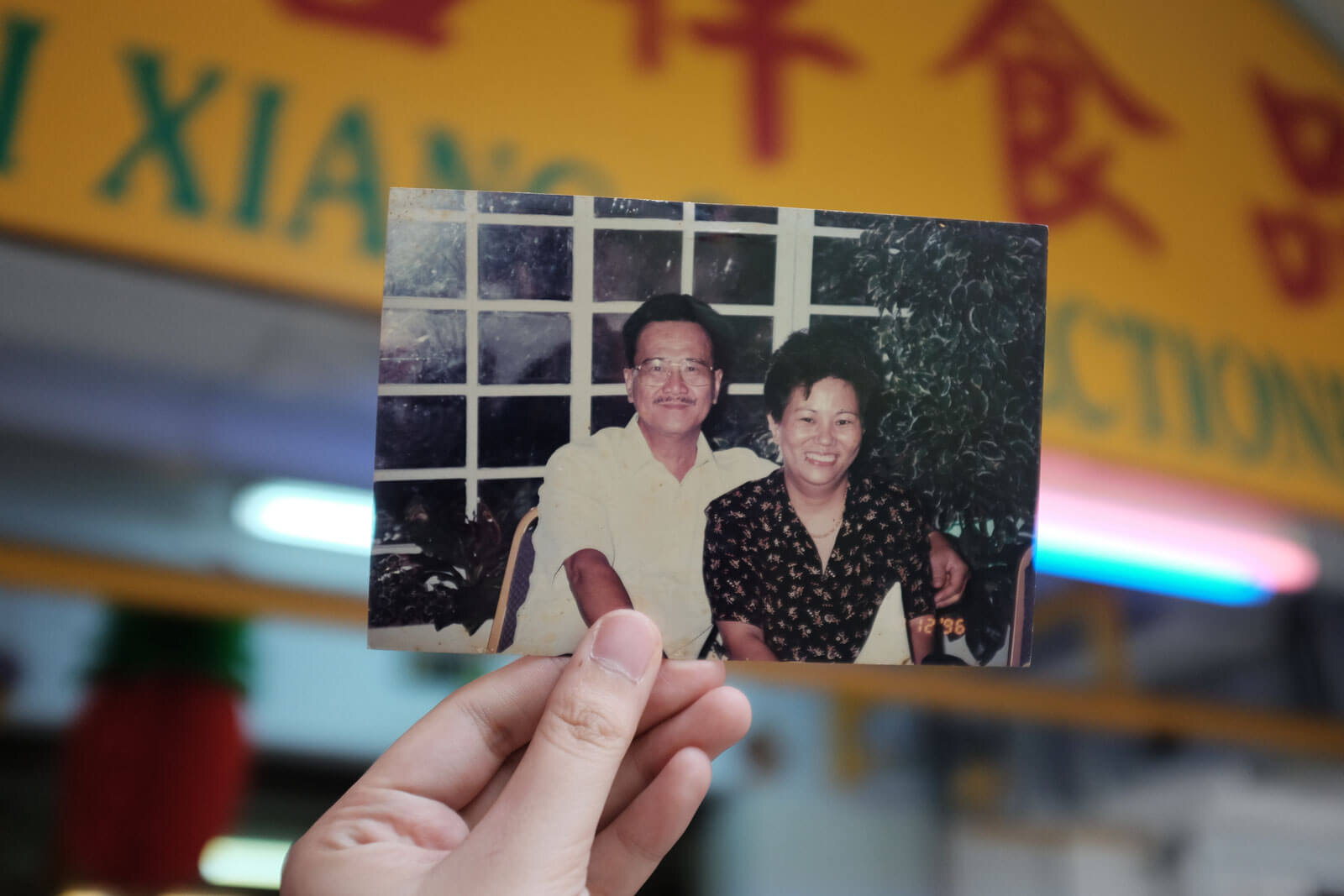Can you find love with a single photograph?
Issue #1
By Wong Zioedy
Shortlist for Best Original Non-Fiction in the 2019 Stack Awards
Along Kerbau Road, between a CD shop and a minimart proclaiming to be “India’s Best”, is a photo studio where the shutters don’t close.
For the past 16 years, scores of young men from Tamil Nadu and Sri Lanka have slipped under tiered roofs of shophouses, carried by word-of-mouth to Sajeev Digital Studio. With ironed-out shirts and carefully-pressed smiles, they strike poses before the lens of the photo studio’s owner, K Sajeev Lal.
And with the photos, these men hope to find a bride from home.
One sultry afternoon, Sajeev, 52, ushers a young man and his friend upstairs for a photo shoot. From next door, an Indian singer croons a love song. In a rich timbre, he asks, “On Earth, can anyone live without love? Can the seven notes produce music without the look of a girl?”
On the first floor, his wife, Sheeja Shaj, 46, mans the reception.
The studio’s 16-year history seems to have forged itself upon the divots on the walls and furnishings within. Smack outside the entrance is a large, clear case brimming with used rolls of film. Blown up photographs – of wide-eyed babies, fair-haired tourists, and headshots superimposed onto campy, rainbow-themed backgrounds – steal space on the walls and ceilings of the two-storey shop.
When I ask him how many there are – a quick glance suggests more than thousands – Sajeev confesses with a bashful smile, “We don’t count.”
We chat for a few minutes before Sajeev goes to greet another customer and comes back to where we have left off. This happens intermittently in our conversation. Business has slowed somewhat in the recent years, but they are busiest on Sundays.
Later, Sajeev and Sheeja will send the pictures of his customers to them via WhatsApp, a marked change from when he used to post the negatives of the photographs to a matchmaker in India.
Girls, in particular, are “quite sensitive” about photos of themselves, Sheeja tells me. “So we cannot give the girls’ photos first. Once the parents like the guy, they will send the girl’s photos.”
Then, the parents of the potential match will provide the couple’s horoscopes – or jathakum - to the agent.
I ask Sajeev if he’s heard of Tinder.
He smiles, then shakes his head faintly.
Sajeev and Sheeja pose along an alley in Little India, Singapore. They matched their attires in red for the photo shoot.
At the entrance of a small Kerala temple, a young woman with braided hair squints against the sun. Perched on the stone steps outside the temple, she is pressed up shoulder-to-shoulder with her new husband, her sari brushing his crisp, white shirt.
It was May 26, 1991; a good day to be married.
The astrologer said so, the parents were convinced, and the gods were in favour. That morning, Sheeja put on a kanjipuri sari – pale sandalwood and paprika – picked by the boy’s family and only delivered the night before.
At 19, Sheeja was the youngest in the family and the last to be married. Her father had died when she was three; her brother – the eldest and the only boy – had already helped to marry off her three older sisters.
In Kerala, India, the wedding customs were simple. Sheeja woke up early that day. An aunt wove flowers through her hair and painted her face with makeup. Along with some 20 other couples, Sheeja would be married to Sajeev at a local temple in a mass wedding ceremony.
Today, a picture of Sheeja in her kanjipuri sari, next to a young Sajeev, is immortalised on her Facebook account. “People usually wear more gold,” Sheeja says of her wedding picture. A handful of gold bangles weigh heavy on the wrists of a young Sheeja. “We are not as rich. But we put on what we have.”
For her, the events remain clear as day. “It was very fast. Many other people were waiting, and we needed to catch the auspicious time – the muhurtam – for the groom to help the bride put on the tali (a yellow thread to be looped around the bride’s neck).”
But unlike the other couples at the mass wedding, they had, in fact, met before. Sheeja remembers playing at Sajeev’s house when she was a little girl.
“(In their family), the three children were all boys, and they didn’t have any girls. His mother and grandmother liked me and they treated me like their own child.”
Sheeja would stay at Sajeev’s house for two to three days while her mother went to work. She remembers crying to the grandmother when the brothers took their mischief too far.
“After the family immigrated to Singapore, they would come back once a year to see us. His father was a travel agent, so the parents would get free tickets to come back and they would visit me. Sometimes they would bring the children.”
After Sajeev served National Service, and later started working in Singapore, Sheeja never saw much of him again, until she turned 17.
She was studying “+2”, the equivalent of Junior College in Kerala. She says: “My mother invited them to my brother’s wedding.
“Sajeev met me. And he told his mother he wanted to marry me.”
. . .
A young man clutches a small, manual camera, as he trails after his mother on a dusty road in a Kerala neighbourhood. He remembers when the thick leaves of coconut trees in the area used to swallow the sky above him.
The year was 1989 and young Sajeev was just turning 24. He hardly went anywhere without his camera; he saw beauty in everything. But his mother was hoping for something else to catch his eye.
Soon, she started showing him pictures of potential brides.
But Sajeev would swipe them away.
There wasn’t anyone that had caught his eye – until he remembered the little girl that used to stay in his house when they were children.
“We realised this girl was quite big already,” Sajeev says. “My mother said she’d talk to her brother.”
But talks of marriage did not come to fruition until Sajeev turned 25. One of Sajeev’s uncles approached Sheeja’s brother, but Sheeja was determined to complete her studies.
“I said I didn’t want to get married, I wanted to study, and I didn’t want to move anywhere, I wanted to stay in India, and I wanted to finish my studies,” Sheeja says. She was 18 then.
“For one year there was no talk. I finished my +2, and then they came to us again.”
Sajeev’s father called her brother. Finally, her brother informed Sheeja’s mother about the proposal, and that the boy’s family did not want to wait another three years. Still, Sheeja was insistent on studying.
“Before we got married I only talked to him once on the phone. His mother called, and he asked me ‘Do you like me?’” Sheeja recalls, mirth in her voice. “I did not have an answer; I didn’t know what my brother told them. It was an arranged marriage so we couldn’t say anything against the parents, so I had no choice.
“I told him ‘I don’t know.’”
Turning the tables, it is now Sajeev and Sheeja who are photographed in their studio.
Back in the photo studio, Sheeja’s phone glows bright in the dimly-lit room. We're upstairs, and Sheeja is telling me about her one-year-old grandson. She carefully thumbs through the photos on his phone, a fond smile on her face.
“My son is 26 and he is already a father. He still looks like a small boy,” Sheeja says. “When he got married, he was the same age as when his father got married too.”
She tells me that Sajeev enjoys taking pictures for his grandson, both with a camera and a smartphone.
Today, despite having been married for more than two decades, Sheeja still recalls a young Sajeev cradling a small, manual camera in his palms. It seems that almost every milestone in their lives have been lovingly captured by Sajeev’s quick eye and deft hands.
He’s not one to make public declarations of love, but their home is filled with snapshots of Sajeev’s wife and son.
“Sajeev won’t talk like me. I talk more. He’s shy. When he knows people better then he will start to talk,” Sheeja says. “My son is the same. If he knows the person very well he will talk very well.”
The couple have been going out for dinner dates to celebrate Valentine’s Day and their wedding anniversaries since they were married in 1991, but 2016 was extra-special.
On May 23, 2016, Sheeja and Sajeev celebrated their 25th wedding anniversary with close family at a chalet.
A niece ordered them a cake – a pale lavender that looked almost silver in the light, Sheeja recalls.
“My niece said it was our silver jubilee, so we had to celebrate!”
Later that year, the Sajeev family had another cause for celebration – their son got married, to a classmate from the same secondary school. Sheeja’s daughter-in-law got to pick her sari.
Theirs was a “love marriage”, Sheeja says.
To show his support, Sajeev brought his own camera to take pictures at the wedding, even though they had also hired another photographer. Even when their son was a little boy, Sajeev was eager to capture special moments in his life.
“After our son was born, Sajeev bought a bigger camera,” Sheeja tells me. “We would dress our son in new clothes and both of us would pose for pictures for Sajeev.”
. . .
Against the cracked walls along Kerbau Road, where the sun scorches, a photographer trains a watchful eye on a smiling couple.
“Can you stand closer together?”
Squinting against the sun, Sajeev shuffles slightly to one side and clasps Sheeja’s hand. He beams.
For once, he isn’t behind the camera.
“For the many years we’ve been around, we’ve never taken photos here,” Sheeja tells me later, clutching her red and gold sari. The outfit drapes heavily on her slight frame, but Sheeja looks as radiant as the day she was married.
Here and there, Sajeev and Sheeja strike poses, agreeably putting their arms around each other and offering suggestions.
After it’s over, we weave between the colourful shophouses and storied walls of Little India, chatting idly until we’re back at the studio. Next door, a voice from the CD shop croons: “Your form feels lovely, the moon feels old, when compared to you, my love.”
When we bid each other goodbye, Sheeja finds her place behind the reception. Sajeev finds his camera, slips past the thousands of pictures, and goes back upstairs.
Issue 5 drops
Broken heart, broken book. Explore Singapore's past through the lens of breakup stories.
Read other stories:
Falling for the girl next door
Kampung Kuchai was Zainal Ismail’s entire world. Here, the people – who were descendants of the orang laut, Singapore’s native inhabitants – stood out larger-than-life. One of them was Norsiah, the soft-spoken girl who lived a few doors away.
Love, luck and prosperity
For a long time, the ang ku kueh, or red tortoise cake, was food offered only to the Chinese gods and deities. Not until the 1980s, when Mr and Mrs Toh broke the mould and turned it into an everyday snack for all.









